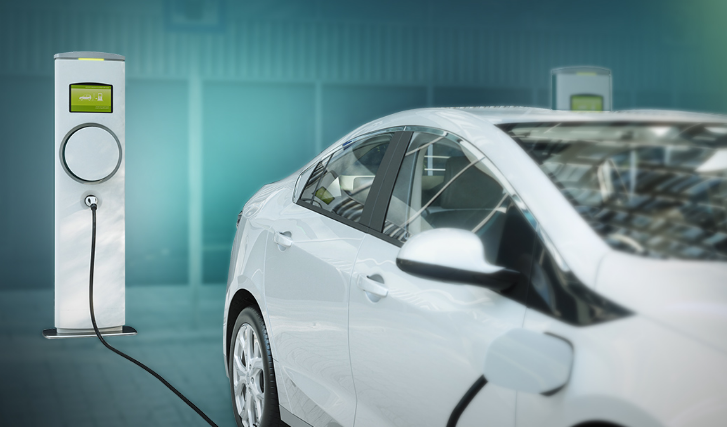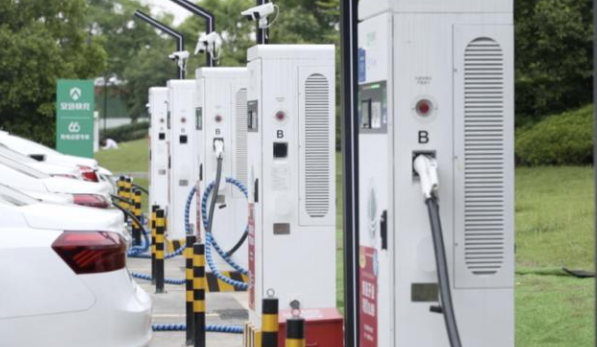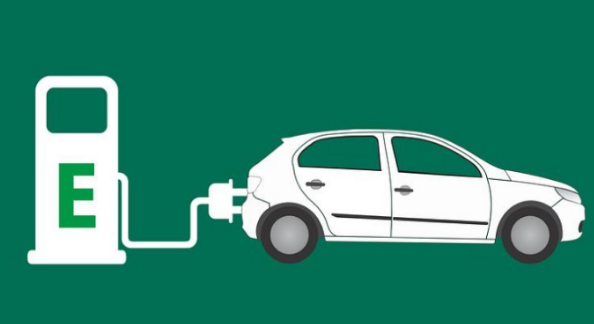Energy depletion and environmental degradation are serious problems faced by human beings in the process of development. The government’s strong support for the new energy industry has promoted the rapid development of the electric vehicle industry. However, the lag in the construction of charging infrastructure has affected the further development of electric vehicles. By 2020, there will be more than 12,000 new centralized switching power stations and more than 4.8 million decentralized charging piles to meet the charging needs of 5 million electric vehicles across the country. The development of solar photovoltaic technology has made the construction of solar charging stations a reality. The research on the intelligent control system of the solar charging station will have practical significance to improve the working efficiency of the charging station.

1. System principle:
Solar photovoltaic power generation technology uses the photovoltaic effect principle of semiconductor devices to convert solar radiation energy into electrical energy. In the 1950s, two major breakthroughs occurred in the field of solar energy utilization: first, in 1954, Bell Labs in the United States developed a 6% practical monocrystalline silicon cell; second, in 1955, Israel successfully developed a selective solar absorption coating. These two breakthroughs are the basis for the transformation of energy technology.
In recent years, the photovoltaic industry has been one of the fastest growing and most stable industries in the world. By the middle of this century, photovoltaic power generation will become one of the basic energy sources for mankind. With the dramatic reduction in the cost of solar modules, the photovoltaic industry will develop to a larger scale and a higher level of technology. Thin-film battery technology will achieve a major breakthrough, and achieve the goal of photovoltaic power generation to compete with conventional power generation. The rapid development of grid-connected photovoltaic building integration marks the transition of human society to a sustainable energy system. It has become a human dream to build a space solar photovoltaic power station.
Faced with the shortage of energy and resources, major countries in the world have formulated medium and long-term development strategies for electric vehicles. At present, “low-emission” vehicle technology is the most mature and has entered a period of rapid growth; “zero-emission” vehicles are also gradually being industrialized; fuel cell vehicles still have many bottlenecks in terms of economy and technology, and their large-scale promotion still exists. the distance.
In recent years, the production and sales of electric vehicles in my country have made huge leaps. In July 2012, the “Energy Conservation and Electric Vehicle Industry Development Plan” issued by the State Council pointed out that pure electric drive is the main strategic orientation for the development of the electric vehicle industry and the transformation of the automobile industry. The government has introduced a series of policies to drive a substantial increase in electric vehicle sales. However, infrastructure construction is slow; core technology is poor; the industrial chain is relatively scattered; the innovation of enterprises is not strong;
With the continuous popularization of new energy vehicles, the demand for electric vehicle charging devices is increasing. Whether the electric energy is replenished in time will directly affect the use effect and development prospects of electric vehicles, which requires the construction of effective and reasonable charging stations.
At present, my country is in the peak period of infrastructure construction of charging stations, but most of the charging stations in China use the national grid as the power source, which not only requires the strong support of the urban distribution network, but also has regional restrictions and environmental pollution, which restricts the electric power car development market. To this end, the use of photovoltaic power generation technology and collaborative charging technology with solar power as the main power supply and AC grid power supply as a supplement, combined with advanced intelligent control technology and network monitoring service strategy, establish an energy-saving, low-carbon and green charging station system. To achieve the purpose of convenient, stable and intelligent charging for electric vehicles.
When the light is sufficient, the square array of photovoltaic modules generates electricity after the DC power distribution unit converges, and stores energy for the battery pack through the charge and discharge control module in the intelligent control system. Using V2G technology, the two-way inverter module is connected to the charging interface to charge the electric vehicle. . At the same time, excess electricity is fed into the grid through grid connection. Solar cell MPPT (Maximum Power Point Tracking) technology ensures that solar cells can achieve maximum power output under changing external environmental conditions, thereby improving the efficiency of the power generation system.
When the light is insufficient, the power grid charges the electric vehicle through the intelligent control system, and at the same time stores energy for the battery pack through the bidirectional inverter module, which can effectively ensure the continuous and stable operation of the charging station.
The load control device takes the transformer as the monitoring object and is installed in the transformer cabinet to monitor the operation status of the transformer in real time. Through the load control technology, it can dynamically decide the load adjustment plan, charge at full power during idle time, and limit the power output when overloaded to ensure that the transformer is not overloaded. run. At the same time, the intelligent control system establishes communication with the charging station, which can obtain the operation status of the charging piles in the charging station in real time, and issue load control commands to the corresponding charging piles.

2. Charging method:
At present, electric vehicles mainly have three charging methods: constant voltage and constant current charging, DC fast charging and battery replacement.
Constant voltage and constant current charging is to use 220 V or 380 V alternating current to charge electric vehicles. The current is low (about 15 A). Although the safety is high, the charging time is too long and cannot meet the emergency needs of the vehicle.
DC fast charging, also known as emergency charging, provides short-term charging of electric vehicles with a large current (generally 150 A~400 A), which can meet emergency needs. However, the charging efficiency is low, and the charging safety requirements are also high.
Replace the battery pack directly and replace it with a fully charged battery pack of the same type. This method can improve the utilization rate of vehicles and bring convenience to users. At the same time, it can also reduce the charging cost by charging during the off-peak period. high demands.
In this system, three charging modes are organically combined to meet the actual charging needs of electric vehicles.

3. System features:
(1) Standardization
In order to meet the charging requirements of different batteries, the system has charging control algorithms for various types of batteries, and standardizes settings for various types of electric vehicle charging interfaces, charging specifications and interface protocols.
(2) Speed up
Although the traditional lead-acid battery technology has matured, there are still problems of low electric energy and short mileage after one charge. This system provides services such as DC fast charging and quick battery replacement, which can ensure the rapid charging of electric vehicles and the continuity of driving.
(3) Intelligent
Intelligence includes intelligent power supply and distribution, intelligent charging and discharging, and intelligent detection and measurement. Intelligent power supply and distribution can realize intelligent adjustment of photovoltaic systems, energy storage systems and conventional power grids, and at the same time play a role in grid-connected peak regulation. Intelligent charging and discharging can monitor the charging and discharging process of the battery, and automatically diagnose and maintain battery faults. The intelligent detection and measurement can automatically detect the battery type and charging capacity, and provide accurate data and judgment basis for the system. In addition, using virtual power generation technology, users can manage and control the charging state through intelligent terminals, reasonably regulate the charging and discharging behavior of electric vehicles, and further improve and optimize the active distribution network.
(4) Integration
The electric vehicle energy management system and the solar charging system are integrated into one, which can realize a small-volume, highly integrated charging solution, which can save space, reduce costs, optimize charging effect and prolong battery life for electric vehicles.
(5) Convenience
Users can perform operations such as charging type selection, charging amount query, charging fee query, network information query, and document printing through the LCD touch screen, which is convenient and user-friendly.

Electric vehicles are the main development direction of new energy vehicles in the future, and the establishment of environmentally friendly, universal, intelligent and convenient solar charging stations is the foundation and guarantee for the development of the electric vehicle industry. Based on the existing electric vehicle charging station and intelligent control system, this paper studies the intelligent control system of solar charging station, combining solar energy and AC grid collaborative charging, V2G, MPPT, load control, virtual power generation, QR code, etc. Advanced technology has fully realized the standardization, rapidity, intelligence, integration and convenience of solar charging stations, providing construction ideas and theoretical foundations for electric vehicle charging systems and power grid companies.






